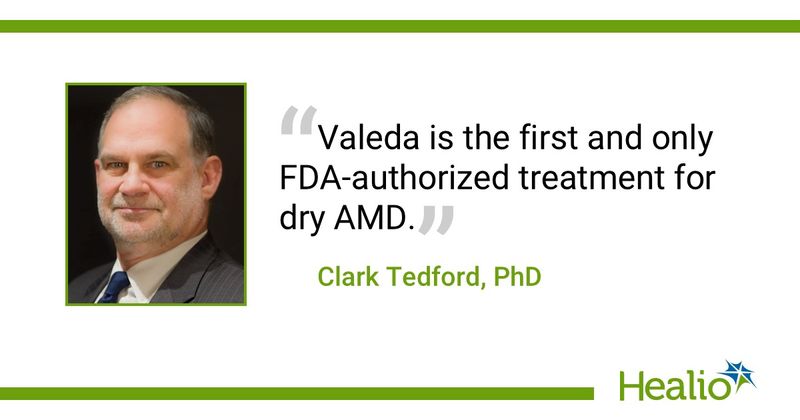FDA grants de novo authorization to photobiomodulation device for dry AMD
Key takeaways:
- The light delivery system maintained vision in a trial among patients with dry age-related macular degeneration.
- It is the first authorized treatment for vision loss related to dry AMD, according to a release.
The FDA granted de novo marketing authorization Valeda Light Delivery System for the treatment of dry age-related macular degeneration, according to a press release from LumiThera.
The ruling is supported by data from the pivotal LIGHTSITE III trial, in which Valeda demonstrated safety and efficacy in maintaining visual acuity and met its primary endpoint.

“Valeda is the first and only FDA-authorized treatment for dry AMD,” Clark Tedford, PhD, LumiThera president and CEO, told Healio. “Valeda improves and maintains visual acuity out to 24 months with repeat treatments as demonstrated in the LIGHTSITE III clinical trial. It is the first treatment for patients that are earlier in the disease, predominantly intermediate patients, that have not progressed to late-stage geographic atrophy. Our trials have demonstrated that treating earlier in the disease can have significant benefits for patients.”
The device is designed to improve best corrected visual acuity by five or more letters during a 24-month period. As Healio previously reported, Valeda also demonstrated a statistically significant reduction in the conversion to geographic atrophy among patients with intermediate AMD during LIGHTSITE III.
“Valeda has been approved in the E.U. and select countries in Latin America for a few years,” Tedford said. “With FDA authorization, we can offer Valeda to U.S. retina specialists, and their patients will now have access to treatment. This is an exciting advancement in dry AMD disease management for both doctors and patients.”
